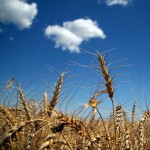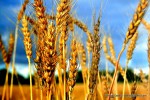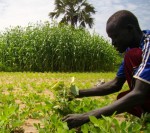News
2015-08-17 | permalink
EU citizens waste 47 million tonnes of food each year
 Most food waste is avoidable (Photo: USDA/flickr.com)
Most food waste is avoidable (Photo: USDA/flickr.com)
Each year, 47 million tonnes of food is wasted in the European Union, of which 80% is avoidable, according to a new study from the Joint Research Centre (JRC) of the European Commission. Europeans waste an average of 123 kg per person annually, or 16% of all food reaching consumers. Avoidable food waste represents by far the largest part, with 97 kg of edible food being wasted each year. The study also took uncertainty into account: Even if the lowest amount of avoidable food waste (45 kg) is assumed, it roughly equals the weight of an apple a day. A maximum of 153 kg per person assumed would equal to 420g, almost a small loaf of bread a day. The study, published in the journal Environmental Research Letters, is based on data from six EU countries - the UK, the Netherlands, Denmark, Finland, Germany and Romania. The UK was the worst culprit, wasting food worth €16.8 billion per year, whilst Romania had the best record. “Theoretically, zero avoidable food waste is a possibility for EU consumers,” write JRC researcher Davy Vanham and colleagues. “This would not only save a lot of money for the consumers themselves, but also for local authorities, which have to pay for food-waste collection and treatment.“ According to the study, reducing the amount of avoidable food waste would also save a large volume of water and avoid losses of reactive nitrogen. The blue water (surface and groundwater resources) associated with the annual 97 kg per person of avoidable food waste averaged 27 litres per capita per day. This is slightly higher than EU municipal water use. The green water (rainwater) footprint was 294 litres per person and day, equivalent to the amount used for crop production in Spain. The amount of nitrogen contained in avoidable food waste was 0.68 kg per capita per year. The study also looked at different product groups. Vegetables, fruit and cereals are wasted most since these food groups have a relatively short shelf-life and are often over-purchased because they are generally cheaper than other products like meat. However, wasted meat had a far greater environmental impact. “Meat production uses much more resources in the first place, so even a little bit of waste can have a big effect in terms of lost resources,” said lead scientist Dr Davy Vanham. Meat accounts for the highest amounts of water and nitrogen resources, followed by wasted cereals. (ab)
2015-08-13 | permalink
Humans have already exhausted Earth's resources for 2015
 Resources are limited (Photo: JD Hancock/flickr.com)
Resources are limited (Photo: JD Hancock/flickr.com)
August 13th marks Earth Overshoot Day - the day humanity has used up the natural resources the world can supply in a year, according to data from Global Footprint Network, an international sustainability think tank. The date is calculated each year by contrasting the world’s demand on nature (ecological footprint) with the biocapacity - forests, pastures, cropland and fisheries as well as the planet’s ability to replenish resources and absorb waste, including carbon dioxide emissions. The costs of this ecological overspending are becoming more evident by the day, in the form of deforestation, drought, fresh-water scarcity, soil erosion, biodiversity loss and the buildup of carbon dioxide in the atmosphere. The world enters ecological ‘overshoot’ this year seven days earlier than in 2014. The day has moved from early October in 2000 to August 13th this year, showing that humans are exhausting natural resources faster than ever. For the rest of the year, we will be living on resources borrowed from future generations. The United States has busted its annual ecological budget already on July 14th, using twice the resources and services nature can provide. In 1961, humans used only around three-quarters of the capacity Earth has for generating food, timber, fish and absorbing greenhouse gases. According to the Global Footprint Network, we would currently need 1.6 Earths to produce the renewable resources needed to support our footprint. Carbon emissions makes up more than half of the total ecological footprint. “Humanity’s carbon footprint alone more than doubled since the early 1970s, which is when the world went into ecological overshoot. It remains the fastest growing component of the widening gap between the Ecological Footprint and the planet’s biocapacity,” said Mathis Wackernagel, president of the think tank. The carbon footprint is closely linked to other components of the footprint - cropland, grazing land, forests and productive land built over with buildings and roads. As more land is needed for food and timber production, fewer areas are available to absorb carbon from fossil fuels, the Network warns. However, a change of course is still possible. If global carbon emissions were reduced by at least 30% by 2030 compared to today’s levels, as in the International Panel on Climate Change’s suggested scenario, Earth Overshoot Day could be moved back to September 16th by 2030. By contrast, business as usual would mean using the resources equivalent to two planets by 2030, using up the Earth’s resources by June 28th. (ab)
2015-08-11 | permalink
Scotland to ban cultivation of genetically modified crops
 Scotland is to remain GMO-free (Photo: B4bees/flickr.com)
Scotland is to remain GMO-free (Photo: B4bees/flickr.com)
Scotland will ban the cultivation of genetically modified crops, taking advantage of new EU rules, the Scottish minister of rural affairs announced on Monday. “The Scottish Government has long-standing concerns about GM crops - concerns that are shared by other European countries and consumers, and which should not be dismissed lightly,” Rural Affairs Secretary Richard Lochhead told the media. Scotland plans to formally ban genetically modified crops in a move to protect the country’s clean, green image. Mr Lochhead has confirmed that the Scottish Government intends to apply recent EU legislation that allows countries to restrict or ban the cultivation of genetically modified crops on their own territory, even if this is allowed at EU level. The minister announced the Scottish Government would shortly submit a request that Scotland is excluded from any European consents for the cultivation of GM crops, including the variety of genetically modified maize already approved and six other GM crops that are awaiting authorisation. “There is no evidence of significant demand for GM products by Scottish consumers and I am concerned that allowing GM crops to be grown in Scotland would damage our clean and green brand, thereby gambling with the future of our £14 billion food and drink sector,” Richard Lochhead explained. “That is why I strongly support the continued application of the precautionary principle in relation to GM crops and intend to take full advantage of the flexibility allowed under these new EU rules to ban GM crops from being grown in Scotland.” The decision is expected to widen a policy divide with ministers in London, who have already signalled that they plan to allow the commercial cultivation of GM crops such as maize and oilseed rape in England, despite significant resistance from consumers and environmental groups. The Soil Association, a British charity campaigning for organic food and farming, welcomed the ban. Soil Association Policy Director, Peter Melchett said, “Scotland's determination to keep out GM crops is good news for the UK as a whole, because it sets a high standard that England, Wales and Northern Ireland must now live up to.” (ab)
2015-08-07 | permalink
World food prices fall to lowest level in almost six years
 Food prices dropped in July (Photo: SnoShuu/flickr.com)
Food prices dropped in July (Photo: SnoShuu/flickr.com)
Prices for global agricultural products fell in July to their lowest level in almost six years, the United Nations Food and Agriculture Organization (FAO) said on Thursday. The FAO Food Price Index averaged 164.6 points in July, down 1.7 points or one per cent from June and almost 40 points (19.4%) less than a year earlier. The index measures prices on international markets of five major food commodity groups: cereals, meat, dairy products, vegetable oils and sugar. The drop in food prices was mainly caused by falling prices of dairy products and vegetable oils. According to FAO figures, the dairy price index dropped 7.2% from the previous month, mainly due to lower import demand from China, the Middle East and North Africa and an increase in EU milk production. Vegetable oil prices were 5.5% lower than in June, reaching their lowest value since July 2009. The FAO says the decrease was primarily caused by a fall in international palm oil prices due to increased production in Southeast Asia. Continued weakness in crude oil prices also had an impact on vegetable oil prices. Meat prices for bovine and pig meat as well as poultry remained stable. The overall decline in food prices does not apply to cereal prices. The FAO Cereal Price Index averaged 166.5 points in July, up 2% from June, but still around 10% below July 2014 levels. Unfavourable weather conditions for maize and wheat in North America and Europe kept cereal prices rising. Rice prices remained on a falling trend. The sugar price index rose by 2.5% compared to June, mainly due to poor harvesting conditions in the main producing region of Brazil. (ab)
2015-08-06 | permalink
UN members agree on goals to end hunger and poverty by 2030
 Goal 2: A world without hunger (Photo: Steve Evans/flickr.com)
Goal 2: A world without hunger (Photo: Steve Evans/flickr.com)
The 193 Member States of the United Nations reached agreement on a sustainable development agenda for the next 15 years. The new agenda to be adopted by world leaders at a summit in September contains 17 Sustainable Development Goals (SDGs) and a set of 169 targets that aim to end poverty and hunger in all their forms by 2030 while protecting the environment. “They address the requirements for all humanity to be able to live decent lives free from poverty, hunger and inequality, with all men and women, girls and boys being able to develop their full potential,” UN Secretary-General Ban Ki-moon told a news conference on Sunday. The outcome document with the title “Transforming our World: The 2030 Agenda for Sustainable Development” concludes a negotiating process that began three years ago with the 2012 UN Conference on Sustainable Development, Rio+20. The 17 SDGs will replace the Millennium Development Goals (MDGs), which expire at the end of the year. Eliminating hunger is a key issue of the new post-2015 agenda. Goal 2 promises to „end hunger, achieve food security and improved nutrition and promote sustainable agriculture”. It contains targets on ending hunger and malnutrition by 2030, doubling the agricultural productivity and incomes of small-scale farmers, ensuring sustainable food production systems and resilient agricultural practices, and maintaining the gentic diversity of seeds, plants and animals. The Swiss organisation Biovision Foundation, which was involved in the negotiations and advocated for a strong goal on food security and sustainable agriculture, welcomed the agreement. Biovision, which was founded by World Food Prize winner and IAASTD co-chair Hans Herren, particularly welcomed the fact that Goal 2 with its eight targets has remained the same throughout the negotiations. Moreover, the outcome document reaffirms the important role and inclusive nature of the Committee on World Food Security (CFS) and underlines that the UN member states „will devote resources to developing rural areas and sustainable agriculture and fisheries, supporting smallholder farmers, especially women farmers, herders and fishers in developing countries, particularly least developed countries.“ The outcome document of the new sustainable development agenda will be formally adopted by member states at a special UN summit from 25-27 September in New York. (ab)
2015-07-31 | permalink
UN projects world population to hit 9.7 billion by 2050
 The world is growing (Dietmut Teijgeman-Hansen/flickr.com)
The world is growing (Dietmut Teijgeman-Hansen/flickr.com)
The current world population will increase from 7.3 billion today to 9.7 billion in 2050 and 11.2 billion in 2100, according to the latest UN projections. India is expected to become the most populous country, surpassing China within the next seven years. Nigeria will overtake the United States to become the world’s third largest country within 35 years from now. The new report, published on Wednesday by the UN’s Department of Economic and Social Affairs (UN DESA), attributes the increase in the world’s population to a small number of high-fertility countries, which already have large populations. By 2050, six countries will have more than 300 million inhabitants: China, India, Indonesia, Nigeria, Pakistan and the USA. In the period 2015-2050, half of the world’s population growth is expected to happen in just nine countries: India, Nigeria, Pakistan, Democratic Republic of the Congo, Ethiopia, Tanzania, the USA, Indonesia and Uganda. The UN figures project Africa to remain the continent with the highest fertility rates, accounting for more than half of the world’s population growth between 2015 and 2050. In 28 African countries, populations are expected to double, and by 2100, ten African countries are projected to have increased fivefold: Angola, Burundi, Democratic Republic of Congo, Malawi, Mali, Niger, Somalia, Uganda, United Republic of Tanzania and Zambia. “The concentration of population growth in the poorest countries presents its own set of challenges, making it more difficult to eradicate poverty and inequality, to combat hunger and malnutrition, and to expand educational enrolment and health systems, all of which are crucial to the success of the new sustainable development agenda,” said John Wilmoth, Director of the Population Division at UN DESA. Although global fertility rates are declining in almost all parts of the world, this is being offset by countries with large populations and a high number of children born per woman. The overall slowdown in population growth will cause the world population to become older. Globally the number of people aged 60 or older is expected to double by 2050 and more than triple by 2100. (ab)
2015-07-27 | permalink
Agriculture is much older than previously thought, new study
 Farming has a long tradition (Photo: Bernat Casero/flickr.com)
Farming has a long tradition (Photo: Bernat Casero/flickr.com)
Crop cultivation may have developed 11,000 years earlier than previously thought, according to a new study by Israeli archaeologists published in the journal PLOS ONE. The researchers believe they have discovered evidence of the earliest known farming attempts by humans in Ohalo II, a 23,000-year-old hunter-gatherers’ sedentary camp on the shore of the Sea of Galilee, Israel. Until now, scientists believed that the origins of farming dated back around 12,000 years ago to Iraq, the Levant, parts of Turkey and Iran, an area called the Cradle of Civilisation. “While full-scale agriculture did not develop until much later, our study shows that trial cultivation began far earlier than previously believed, and gives us reason to rethink our ancestors’ capabilities,” said Prof. Marcelo Sternberg of the Department of Molecular Biology and Ecology of Plants at Tel Aviv University, one of the authors of the study. “Those early ancestors were more clever and more skilled than we knew.” The researchers examined more than 150,000 specimens of plant remains retrieved from the Ohala II site. The well preserved hunter-gatherer settlement was discovered in 1989 when the water level in the sea of Galilee dropped due to drought and excessive water extraction. The researchers determined that early humans there had gathered over 140 species of plants. These included 13 known weeds mixed with edible cereals, such as wild emmer, wild barley, and wild oats. Since weeds thrive in cultivated fields and disturbed soils, a significant presence of weeds species is widely considered an indicator of systematic cultivation, according to the study. The researchers also found a grinding slab, a stone tool used to extract cereal starch granules, as well as a distribution of seeds around this tool, reflecting that the cereal grains were processed for consumption. (ab)
2015-07-20 | permalink
Bread may contain carcinogenic weed killer, campaigners warn
 Bread - a healthy choice? (Photo: mystuart/flickr.com)
Bread - a healthy choice? (Photo: mystuart/flickr.com)
Bread sold in the UK is being contaminated with a weed killer recently categorised as “probably” carcinogenic by the World Health Organisation (WHO), campaigners have warned. In 2013, one third of bread tested by the government’s expert committee on pesticide residues in food (PRiF) contained a measurable amount of glyphosate, the main component of Monsanto’s Roundup herbicide. In 2014, the experts still found traces of the weed killer in as much as 15% of UK bread. Wholemeal bread, which contains more of the wheat grain, may be most affected. The Soil Association has now called for an immediate ban on glyphosate ahead of this year’s harvest, urging farmers and the milling industry not spray the weedkiller on wheat crops pre-harvest. Policy director Peter Melchett said: “We cannot ignore the World Health Organisation’s findings that glyphosate is a probable cause of cancer - the risks are too great. According to the campaigners, the use of the weedkiller has risen by 400% in the last 20 years in UK farming. Glyphosate is one of the three pesticides regularly found in routine testing of British bread. “Although the quantities found are well below the official safety level, this limit was agreed before the latest scientific findings about the dangers of glyphosate”, Peter Melchett said. In March, the WHO’s International Agency for Research on Cancer concluded in a report that glyphosate “probably” causes cancer in humans. Last week, Professor Christopher Portier, one of the co-authors of the report, reiterated the IARC’s conclusions, and said: “Glyphosate is definitely genotoxic. There is no doubt in my mind.”(ab)
2015-07-13 | permalink
US$267 billion per year needed to eradicate world hunger
 Farmer in South Sudan (Photo: Abdullah Ampilan/Oxfam)
Farmer in South Sudan (Photo: Abdullah Ampilan/Oxfam)
Ending world hunger sustainably by 2030 will require an estimated $267 billion per year for investments in rural and urban areas and in social protection, the United Nations said on Friday. Roughly $160 annually would be needed for each person living in extreme poverty over the next 15 years to provide access to food and improve livelihoods. “Given that this is more or less equivalent to 0.3 percent of the global GDP, I personally think it is a relatively small price to pay to end hunger,” said José Graziano da Silva, Director-General of the UN Food and Agriculture Organisation (FAO). The report was published by FAO, the World Food Programme and the International Fund for Agriculture Development ahead of a major international conference on financing for development, starting on 13 July in Addis Ababa, Ethiopia. Worldwide, almost 800 million people are still chronically undernourished, most of them in rural areas. “The message of the report is clear: if we adopt a ‘business as usual’ approach, by 2030, we would still have more than 650 million people suffering from hunger”, Graziano da Silva said, “This is why we are championing an approach that combines social protection with additional targeted investments in rural development, agriculture and urban areas that will chiefly benefit the poor,” he explained. Social protection measures would cost an additional $116 billion per year – two thirds of them intended for rural areas – while some $151 billion in additional pro-poor investments would be required to stimulate income generation benefiting the world’s poorest. The report notes that social protection in the form of cash transfers are an effective means of eliminating hunger. This money could make more diverse and thus healthier diets affordable to the poor, improving nutrition and also fighting micronutrient deficiencies. Additional investment should ensure that people living in extreme poverty will eventually be able to provide for themselves. According to the report, it is necessary “to boost both private and public investment to raise rural and agricultural productivity and incomes, as well as to promote more productive, sustainable and inclusive food systems.” Small-scale agricultural producers and rural entrepreneurs could make a decisive difference. However, formal systems of credit and insurance often discriminate against them, especially small family farmers.“ Eliminating hunger is a key issue of the Sustainable Development Goals (SDG) of the new post-2015 agenda, to be adopted by world leaders in September to replace the UN Millennium Development Goals. (ab)
2015-07-08 | permalink
Soil erosion a major threat to Britain's food supply, warns report
 Soil erosion is putting soils at risk (Photo: Hernán Piñera/flickr.com)
Soil erosion is putting soils at risk (Photo: Hernán Piñera/flickr.com)
Large areas of farmland in the United Kingdom are at risk of becoming unproductive within a generation due to soil erosion, according to a government advisory group. A recent report from the Committee on Climate Change (CCC) has warned that soils are being degraded and eroded at unsustainable levels in some areas, such as the East Anglian Fens. This could reduce agricultural productivity and lead to increased reliance on food imports at a time of growing global demand and rising prices. “Soil is a very important resource which we have been very carefree with. At the moment we are treating our agricultural soils as though they are a mined resource – that we can deplete – rather than a stewarded resource that we have to maintain for the long-term future,” said Lord Krebs, chairman of the CCC’s adaptation sub-committee. In its progress report on adaptation to climate change, the committee says that soil erosion is the result of current methods of intensive agriculture, with “deep ploughing, short-rotation periods and exposed ground leading to soil erosion from wind and heavy rain”. Britain’s soil quality has been severely damaged over the past decades. The country has lost 84% of its fertile topsoil since 1850, with the erosion continuing at a rate of 1cm to 3cm a year. The experts warn this rate of loss is not sustainable as soil can take a hundred years or more to form. “The most fertile topsoils in the east of England – where 25% of our potatoes and 30% of our vegetables are grown – could be lost within a generation,” said Lord Krebs. Climate change could make soil erosion and degradation even worse due to rising temperatures and water shortage, as well as the frequency of heavy rainstorms, which wash fertile topsoil away. Trevor Mansfield, head of policy at the Soil Association, a Britain’s leading non-profit organisation campaigning for organic agriculture, commented on the committee’s results: “For the first time, this report highlights the critical red list status of British soils, threatening our climate and future food production.” Soil Association has called on the UK Government to commit to a target to achieve a 20% increase in soil organic matter in UK arable and horticultural soils over 20 years, to protect the country’s ability to grow food in the face of a changing climate. (ab)

